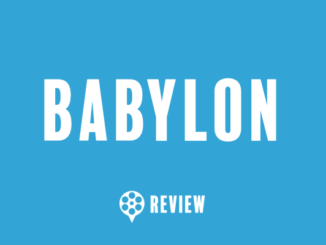Secrecy around a film can prove to be a risky move but it worked for Cloverfield when it made $170.8 million worldwide on a $25 million budget. The lore on this one was so strong that it led to a quasi-sequel (10 Cloverfield Lane) which didn’t have the same level of secrecy attached but certainly caught us by surprise since the film was under another title during production. Most people didn’t know what it was until its first TV spot dropped.
Unique viral marketing doesn’t always work, however. Sometimes it can give off a level of awareness that seems massive but in reality, the hype is in this small circle and hasn’t reached the masses. Look no further than the pre-release hype for Snakes on a Plane in 2006.
In the summer of 2006, people around the country starting receiving phone calls telling them to go see Snakes on a Plane. The calls were from the star of the film, Samuel L. Jackson. Even weirder, he knew all sorts of details about people’s lives. Who wouldn’t want to get a bad ass phone call from Sam Jackson?
In truth, Jackson was not calling people. The messages were pre-recorded and could be personalized on the movie’s website with a person’s name, their profession, their interests, some personal trait, and a preferred mode of transportation. It also asked the sender’s relationship to the person so Jackson could say something like “grab your (homegirl, ex-husband, life partner, copilot) Mallory and go see Snakes on a Plane.”
Even before the clever phone call angle, the film gained a considerable amount of attention before its release. Large fanbases were formed online and it became an Internet phenomenon due to the film’s title, casting, and premise. In response to the Internet fan base, New Line Cinema incorporated feedback from online users into its production and added five days of reshooting. Before and after the film was released, it was parodied and alluded to on television shows and films, fan-made videos, video games, and various forms of literature.
This sort of hype should’ve turned the film into a big hit but it was clear after the film was released that the film had a very vocal but smaller than anticipated cult following. Despite the immense Internet buzz, the film’s gross revenue did not live up to expectations, earning $15.25 million in its opening weekend before grossing $62 million worldwide on a $33 million budget. It was an example of a marketing campaign speaking to a specific audience but not quite gaining the attention of those who weren’t attached to message boards 24/7.
Sometimes a marketing campaign can make people think they’re seeing things and in the age when videos can go viral, Chronicle utilized an effective marketing stunt that gained a fair share of attention.
In January of 2012, hundreds of New Yorkers were fooled into believing that three people were flying over their city’s most beloved landmarks. In fact, what they were seeing were people-shaped air crafts flying around the city to promote the movie Chronicle. Thinkmodo, the agency who created the stunt, was inspired by the three main characters in the film whom all have the ability to fly.
While only a small number of people saw the actual stunt, videos quickly started circling the web and we all know how powerful a stunt like this can be since we live in the age of everyone flocking to YouTube to post a video of this nature to simply say they did it first. The cool thing about the stunt is that it does look convincing and if I was unaware and stumbled across the videos, I’d be intrigued to see what it was all about.
The stunt proved to be one successful aspect of the film’s marketing which really sold the found footage aspect of the film’s plot. The film became a bit of a surprise hit when it grossed $126.6 million on a $12 million budget.
Another film that utilized video viral marketing was Battle: Los Angeles. There isn’t a lot memorable about the finished product but initial campaigns generated chatter among those on YouTube, especially people who believe we aren’t alone in the universe.
In early 2011, three videos of a UFO hovering over Temple Mount in Jerusalem started spreading around YouTube. While believers were quick to defend the videos, many skeptics started to doubt their validity. The videos were most likely a part of the Battle: Los Angeles marketing campaign, although it was never confirmed by the studio but when a similar effort also included this YouTube clip of a flying object hovering above the I-110 in Los Angeles, it became clear that Sony Pictures had gotten a bit clever:
In addition to the viral video, Sony created a website documenting invasion sites and the history of alien encounters around the world. Consumers were also invited to report any extraterrestrial threats you come across by at reportthreats.com. Campaigns that get people involved beyond just seeing the film, can be quite effective. It led to the film grossing $211.8 million worldwide on a $70 million budget.
When it comes to marketing potentially big franchises, a lot of studios play it safe because there is so much money attached that it can be a bit risky to go against the grain. This is what makes the marketing campaign for Deadpool so refreshing because there wasn’t a ton of money behind it by studio standards but they stuck with the offbeat humor of the film but were still able to sell it as a potential blockbuster.
There were aspects of the marketing that were traditional. In July 2015, director Tim Miller and several cast members attended the 2015 San Diego Comic-Con to present the trailer of the film, which received a standing ovation from attendees who requested that it be played again. Attending Comic-Con is a must for these kinds of films but people in attendance thought it bucked the trend by presenting a trailer that was very much in line with what the film was selling but also offering up something new and different.
In December 2015, Fox launched a viral marketing campaign titled “The 12 days of Deadpool”, which consisted of one website posting new info about the film each day, with the culmination of a new trailer released on Christmas Day. The film then began promoting it self in a jokingly way as Valentine’s Day romance film (coinciding with its release date) and let’s not forget this little emoji that began popping up on billboards and any group chat you were in with your friends as you were making plans to see the movie:

It all came together to work for the film as it has grossed a massive $783.1 million worldwide on a $58 million budget. The appeal of its campaign is that it was different than the traditional superhero film and it’s something people really responded to.
Deadpool isn’t the only superhero film to get creative with its marketing. Back in 2007, The Dark Knight got people involved in a big way that played a bit on politics without being completely stupid about it (I’m looking at you A Cure For Wellness).
In May 2007, a website called I Believe in Harvey Dent launched in support of the character’s political campaign. At the same time, a vandalized version launched called I Believe in Harvey Dent Too. As fans sent in emails to this site, pixels were slowly removed until they revealed the culprit: the Joker.
The Joker’s website, WhySoSerious.com, served as the villain’s recruitment headquarters. He instructed fans to uncover clues at various real-world locations. In one such clue, jokers-in-training were sent to a bakery and given a cake with a phone number written on it. Inside the cake was an evidence bag containing a cell phone, charger, and instructions written on a Joker playing card.
Ultimately, these clues led to another website, Rory’s Death Kiss, where fans could submit photos of themselves as the Joker. Those who did were sent a copy of The Gotham Times (yes, an actual newspaper), whose electronic version led to a bevy of other websites including GothamPolice.com and GothamNationalBank.com.
The video below gives more detail, but if you go to 3:38 you can see just how involved people became in this campaign, as hundreds of “Citizens for Batman” gathered in New York City to see something special light up the night sky:
The great thing about the campaign is that a film of this stature doesn’t need it (the film would’ve grossed its $1 billion worldwide tallies regardless) but tit was unique and fun and got the fans involved. It also managed to sell the anarchy of The Joker character without it delving into something serious and dark in real life.
All of these examples were unique because they were smart and effective. The campaign for A Cure For Wellness may seem all meta and cool but in the current political climate we’re in, it just feels desperate and ill-timed. The news is already being attacked for what is real and what isn’t so this added fuel to a fire that really doesn’t need to be ignited further. I’m al for mixing things up with marketing. The more clever and bizarre it is, the more I’m intrigued. studios just have to remember to play it smart so we can pick up what they’re putting down.




